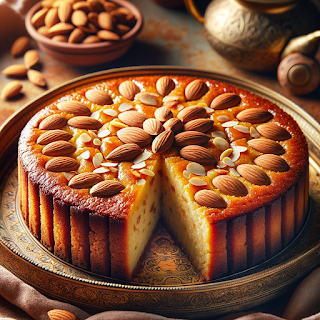Origin Story: Baklava - A Middle Eastern Eternal Delicacy
Baklava is a renowned Middle Eastern dessert known for its layers of flaky phyllo pastry, filled with chopped nuts and sweetened with syrup or honey. This indulgent treat has a rich history and cultural significance that spans centuries and borders.
Historical Roots
The origins of baklava are widely debated, with various countries laying claim to its creation. The most widely accepted theory is that baklava has its roots in the Ottoman Empire, where it was perfected and popularized. The oldest known recipe for a similar dessert comes from the Assyrian Empire around the 8th century BCE, where layers of bread dough were filled with nuts and honey.
The modern version of baklava that we know today was likely developed in the kitchens of the Topkapi Palace in Istanbul, during the Ottoman Empire's reign. The use of thin, layered pastry dough called phyllo (from the Greek word meaning "leaf") and the method of layering it with nuts and sweet syrup became a hallmark of Ottoman cuisine and spread throughout the empire.
Cultural Significance
Baklava holds a special place in Middle Eastern, Mediterranean, and Balkan cuisines. It is often associated with celebrations and special occasions, such as Ramadan, Eid, Christmas, and weddings. Each region has its own variations, using different types of nuts, spices, and syrups to create unique versions of this beloved dessert.
In Turkey, baklava is typically made with pistachios or walnuts and sweetened with a simple syrup flavored with lemon. In Greece, almonds are commonly used, and the syrup often includes honey and cinnamon. In Lebanon and Syria, rose or orange blossom water is added to the syrup, giving the baklava a distinct floral aroma.
Personal Connection
My love for baklava began during family gatherings, where this dessert was always the star of the dessert table. I was fascinated by the intricate layers and the perfect balance of sweetness and nuttiness. The process of making baklava was a communal activity, with family members coming together to layer the phyllo, chop the nuts, and prepare the syrup.
I remember my grandmother teaching me the art of making baklava, emphasizing the importance of patience and precision. Each layer of phyllo had to be brushed with butter to ensure a crispy, golden texture, and the nuts had to be finely chopped to create a uniform filling. The syrup was poured over the hot baklava, allowing it to soak in and infuse each layer with sweetness.
Recipe Evolution
Creating the perfect baklava involves several key steps. The phyllo dough must be handled with care to prevent it from drying out and becoming brittle. The choice of nuts can vary based on personal preference, but a mix of pistachios, walnuts, and almonds often provides a delightful contrast of flavors and textures. Spices such as cinnamon, cardamom, and cloves can be added to the nut mixture to enhance the flavor.
The syrup, typically made from a mixture of sugar, water, and lemon juice, can be flavored with honey, rose water, or orange blossom water. Pouring the hot syrup over the freshly baked baklava is crucial to achieving the perfect texture, as it allows the pastry to absorb the sweetness while retaining its crispiness.
Sharing the Tradition
Today, baklava remains a favorite in my family, and I continue to make it for special occasions and gatherings. Each bite is a reminder of the rich cultural heritage and the joy of sharing something delicious with loved ones.
Ingredients
Instructions
- Preheat your oven to 175°C (350°F).
- Mix the chopped nuts with ground cinnamon in a bowl.
- Brush a 9x13 inch baking dish with melted butter.
- Lay a sheet of phyllo dough in the dish and brush with butter.
- Repeat until you have 8 layers.
- Sprinkle a thin layer of the nut mixture over the phyllo.
- Add 2 more layers of phyllo, brushing each with butter.
- Repeat the layering process until all the nuts are used.
- Top with 8 more layers of phyllo dough, brushing each layer with butter.
- Cut into diamond or square shapes before baking.
- Bake in the preheated oven for about 45 minutes, or until golden brown and crisp.
- While the baklava is baking, combine sugar, water, honey, vanilla extract, and lemon juice in a saucepan.
- Bring to a boil, reduce heat, and simmer for 10 minutes.
- Remove the baklava from the oven and immediately pour the hot syrup over it.
- Let it cool completely before serving.
Pro Tips
- Phyllo Dough Handling: Keep the phyllo dough covered with a damp cloth to prevent it from drying out while working.
- Even Layers: Make sure to evenly distribute the nut mixture for a consistent taste in every bite.
Secret Tips
- Flavor Enhancement: Add a pinch of ground cloves or cardamom to the nut mixture for an extra depth of flavor.
- Syrup Absorption: Pour the syrup over the baklava as soon as it comes out of the oven to ensure maximum absorption.
Serving Options:
Variations & Customization Options:
- Chocolate Baklava: Add a layer of chocolate chips between the nut layers for a decadent twist.
- Fruit-Infused: Incorporate dried fruits like apricots or dates into the nut mixture.



